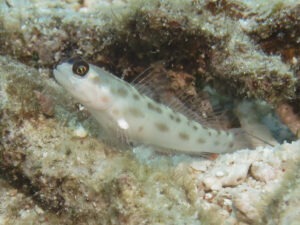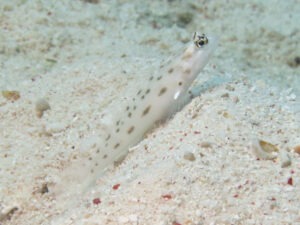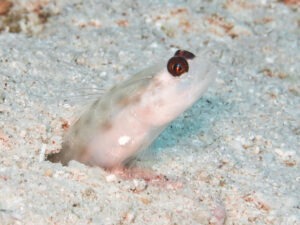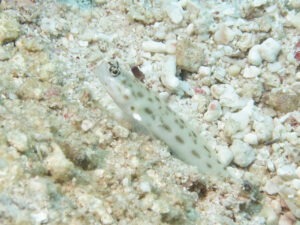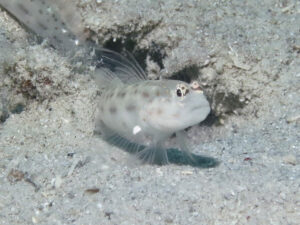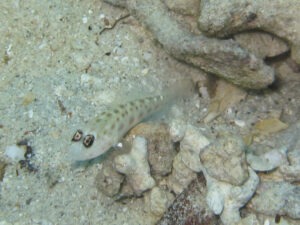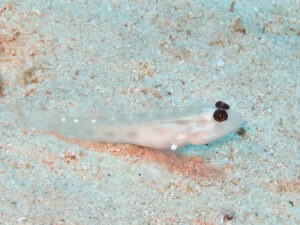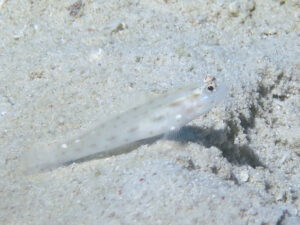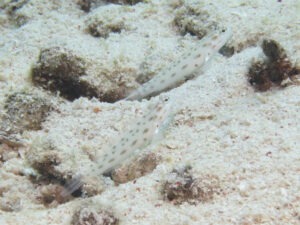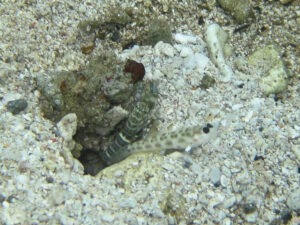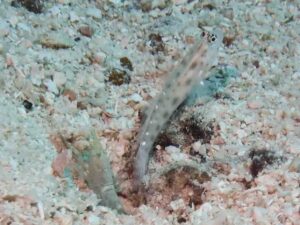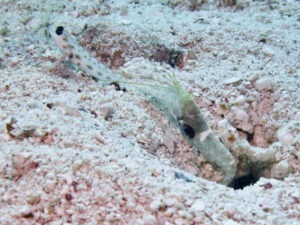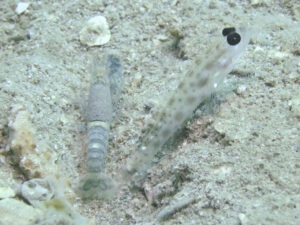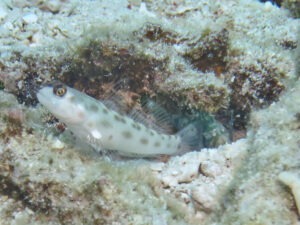Fierce Shrimpgoby
Ctenogobiops feroculus
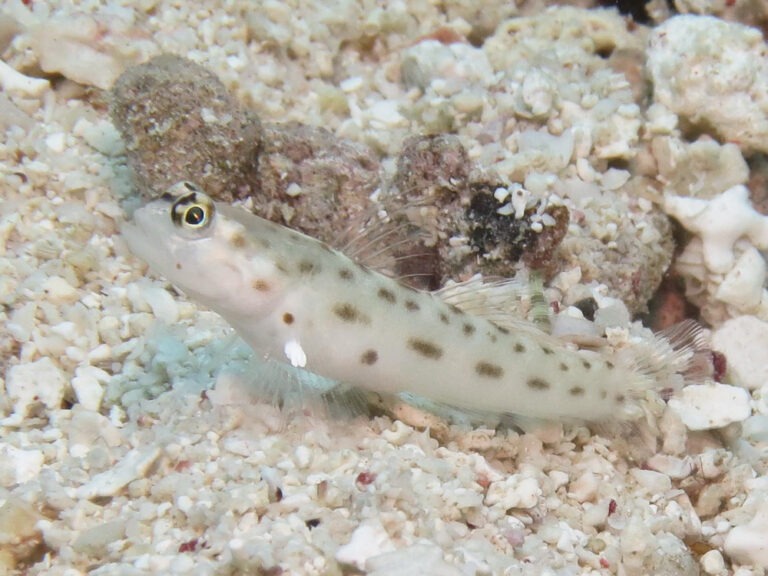
Fierce Shrimpgoby
Ctenogobiops feroculus
Lubbock and Polunin, 1977
Body design
A small goby, 5. 5 cm in length, white with a line of brown patches along the side of the body and little other decoration. These patches are oval with an ill-defined edge. When strongly illuminated they are surrounded by a ring of small reflective blue spots. There are no orange spots between the brown patches and no yellow ventral bands.
The head is plain but has a reflective blue pattern in appropriate light.
Fin design
The fins are transparent, the first dorsal fin having long rays that are difficult to see against a variegated sand background. There is a white patch at the base of the transparent pectoral fin.
Diagnostic features
Overall appearance is very plain and within its genus C feroculus can almost be identified by its lack of features. Lateral patches are noticeably bigger than in other species in this genus and have a very obscured outline. The face is devoid of markings but has a strongly reflective blue pattern in appropriate light.
Similar species
The species of Ctenogobiops may be difficult to tell apart. Apart from C tangaroai, with its distinctive dorsal fin, they are differentiated by head and body patterns.
Head patterns
C aurocingulus has 16 bright orange markings in four rows of four in the shape of a trapezoid starting at the angle of the jaw.
C feroculus. There is no head pattern.
C crocineus has a series of broken diagonal lines covering the whole area from the nose to the gill covers.
C mitodes have three spots in a straight line along a skin fold running back and upwards from the angle of the mandible.
C pomastictus has three spots curving ventrally, running back from the angle of the mandible. Above these, there are three spots in a horizontal straight line below the level of the eye.
Body patterns
C aurocingulus Fine gold bars running through lateral patches
C feroculus. Poorly defined lateral patches only
C crocineus Lateral decoration arranged in parallel lines
C mitodes Small brown spots below the level of lateral patches
C pomastictus Dark-outlined orange spots below patches
Other Common Names:
Pale Shrimp-goby, Sandy Prawn-goby
Natural History
Habitat
1 to 10 m in fine or coarse sand in the vicinity of rocks or dense stands of coral.
Behaviour
Confident, easily approached.
This is a shallow-water fish and we have not found it in moderate or deep water.
Like other shrimpgobies, it signals or reflects emotion by darkening the eye surround. It seems to do this more commonly than most.
Distribution
Published distribution
Red Sea to islands of Micronesia and Society Islands, Ryukyu Islands to New Caledonia and Australia (Great Barrier Reef and Northwest shelf), Philippines Papua New Guinea and Solomon Islands (AE) (R)
Our records
Papua New Guinea; Kimbe Bay, New Britain
Solomon Islands; Kolombangara, Russell and Nggela Islands.
Australia; Great Barrier Reef from Lizard Island to Lady Musgrave Island.
Associated Shrimp species
Associated Shrimps (five Shrimps)
Banded Snapping Shrimp, Alpheus species 1
Black-sided Snapping Shrimp, Alpheus cf djeddensis
Dark Marbled Snapping Shrimp, Alpheus macellarius
Green Snapping Shrimp, Alpheus species 4
Pale Marbled Snapping Shrimp, Alpheus djiboutensis

